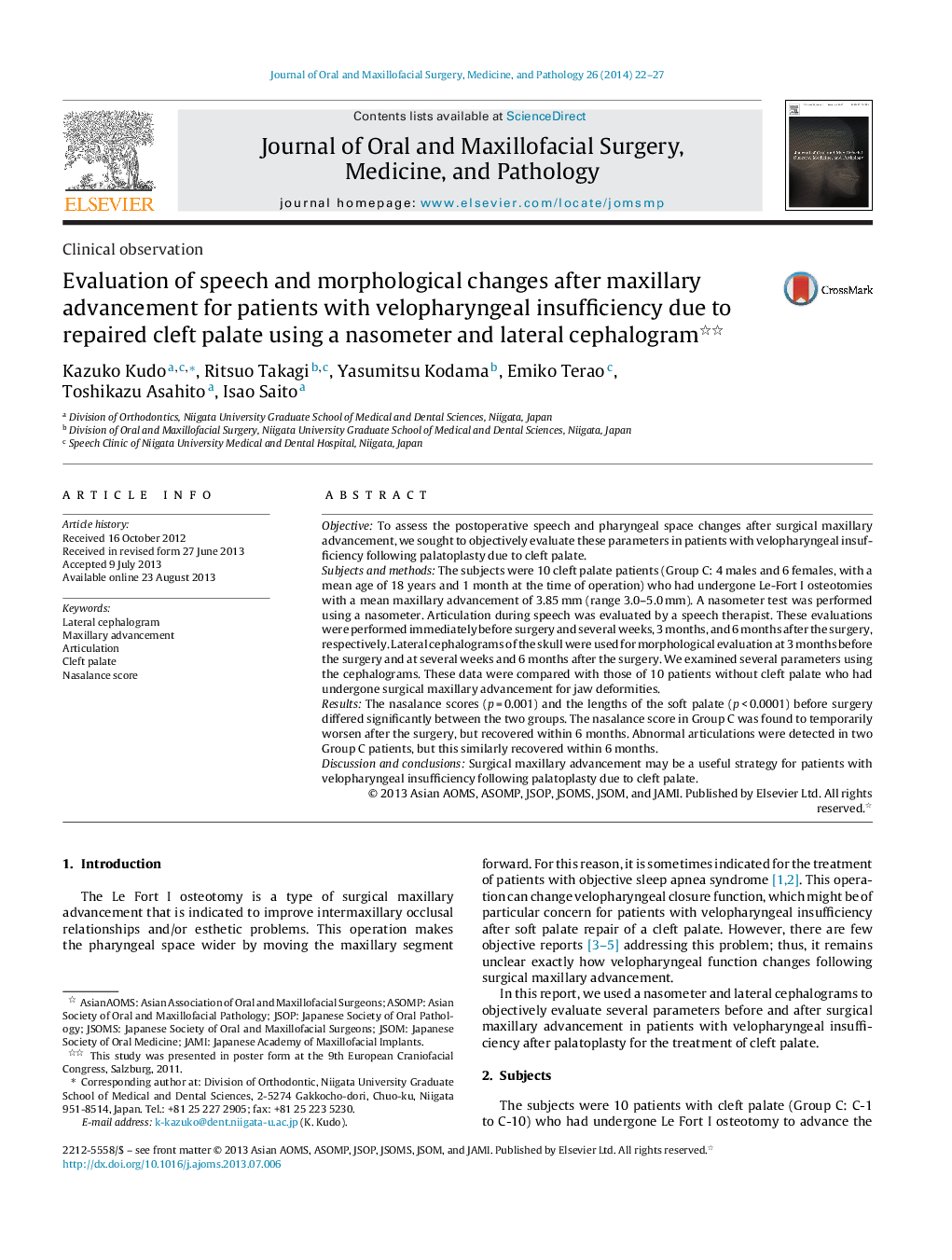| Article ID | Journal | Published Year | Pages | File Type |
|---|---|---|---|---|
| 3159588 | Journal of Oral and Maxillofacial Surgery, Medicine, and Pathology | 2014 | 6 Pages |
ObjectiveTo assess the postoperative speech and pharyngeal space changes after surgical maxillary advancement, we sought to objectively evaluate these parameters in patients with velopharyngeal insufficiency following palatoplasty due to cleft palate.Subjects and methodsThe subjects were 10 cleft palate patients (Group C: 4 males and 6 females, with a mean age of 18 years and 1 month at the time of operation) who had undergone Le-Fort I osteotomies with a mean maxillary advancement of 3.85 mm (range 3.0–5.0 mm). A nasometer test was performed using a nasometer. Articulation during speech was evaluated by a speech therapist. These evaluations were performed immediately before surgery and several weeks, 3 months, and 6 months after the surgery, respectively. Lateral cephalograms of the skull were used for morphological evaluation at 3 months before the surgery and at several weeks and 6 months after the surgery. We examined several parameters using the cephalograms. These data were compared with those of 10 patients without cleft palate who had undergone surgical maxillary advancement for jaw deformities.ResultsThe nasalance scores (p = 0.001) and the lengths of the soft palate (p < 0.0001) before surgery differed significantly between the two groups. The nasalance score in Group C was found to temporarily worsen after the surgery, but recovered within 6 months. Abnormal articulations were detected in two Group C patients, but this similarly recovered within 6 months.Discussion and conclusionsSurgical maxillary advancement may be a useful strategy for patients with velopharyngeal insufficiency following palatoplasty due to cleft palate.
